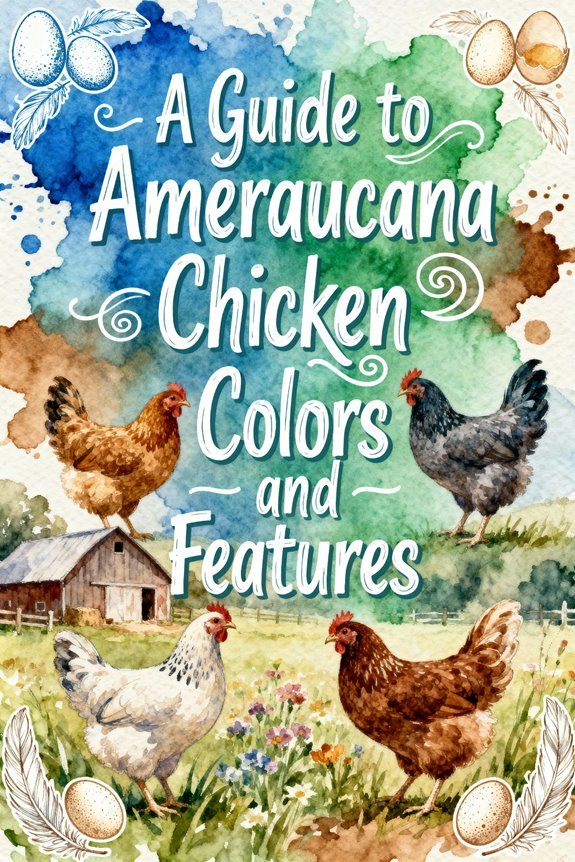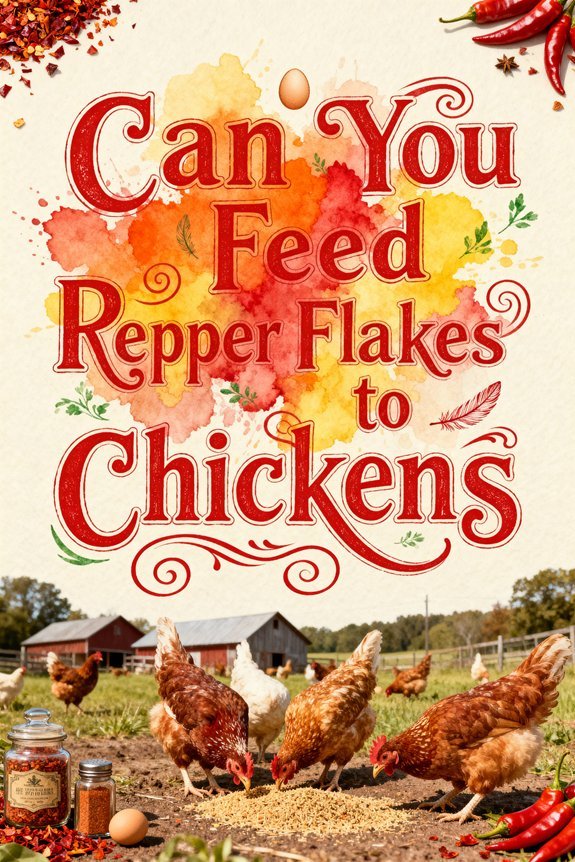A Guide to Ameraucana Chicken Colors and Features
You’ll find Ameraucana chickens displaying eight distinctive color varieties: Black, Blue, Blue Wheaten, Brown Red, Buff, Silver, Wheaten, and White. These birds exhibit characteristic pea combs, prominent facial muffs, and reddish-brown eyes across all phenotypes. Their U-shaped profile combines with clean, unfeathered legs in slate-blue to dark slate shades. The breed’s unique genetic markers contribute to their blue egg-laying trait, while proper understanding of their phenotypic expressions enables ideal breeding outcomes.
Distinctive Physical Traits of Ameraucana Chickens
The Ameraucana chicken exhibits distinctive morphological characteristics that set it apart from other poultry breeds. You’ll notice their prominent facial features, particularly the well-developed muffs that create a beard-like appearance, coupled with a pea comb that’s adaptively suited for cold climates. Their body structure follows a distinctive U-shaped profile when viewed laterally, with roosters reaching 6.5 lbs and hens 5.5 lbs. The breed is known for producing blue or blue-green eggs. Unlike turquoise earlobe chickens such as Silkies, Ameraucanas maintain standard coloring in their ear area.
These birds display clean, unfeathered legs with characteristic slate-blue to dark slate coloration, while their plumage maintains a close-fitting, silky texture. You’ll observe a fully developed tail, which differentiates them from Araucanas. The breed’s phenotypic markers include the absence of ear tufts and rumplessness, maintaining strict conformity to established breed standards while supporting their robust constitutional adaptability.
Recognized Color Varieties and Patterns
Standardized color varieties in Ameraucana chickens encompass eight primary phenotypic expressions recognized by the American Poultry Association, with additional variants acknowledged by the American Bantam Association. These color combinations include Black, Blue, Blue Wheaten, Brown Red, Buff, Silver, Wheaten, and White, each displaying distinct genetic markers in both plumage and associated features.
You’ll find that feather variations correlate directly with specific beak and shank colorations. Black varieties exhibit uniformly black beaks and dark slate shanks, while Blues display horn-toned beaks with slate shanks. The ABA has recently expanded its recognition to include Self-Blue and Splash variants in bantams. The pea comb is a required feature on both males and females of all color varieties. All color varieties must maintain mandatory breed characteristics, including beard and muffs, while displaying the breed’s signature reddish-brown eyes regardless of phenotypic expression.
Understanding Blue Egg Production
Beyond the visible plumage variations, Ameraucana chickens possess a remarkable genetic trait that manifests in their distinctive blue egg production. The genetic inheritance of this trait involves oocyanin (biliverdin), a pigment that permeates the entire eggshell during formation in the oviduct. You’ll find this pigment deposition occurs early in shell development, unlike brown eggs where protoporphyrin only coats the surface.
Your Ameraucana hens will lay 3-4 medium-sized eggs weekly when provided ideal conditions, including 14 hours of daily light exposure. The breed’s blue egg gene demonstrates dominant inheritance patterns and shows linkage to the pea comb phenotype. A well-balanced diet containing 16-18% protein supports optimal egg production and shell quality. For successful breeding programs, you’ll need to maintain proper environmental conditions and guarantee genetic diversity while selecting for birds that exhibit both the desired egg color intensity and consistent production rates.
Temperament and Social Behavior
While individual personalities can vary considerably within the breed, Ameraucana chickens consistently display docile and sweet-natured temperaments coupled with high intelligence quotients. Their behavioral phenotype exhibits strong positive correlations with friendly interactions, particularly in response to consistent human contact. Similar to their close relatives, they produce colorful egg varieties in shades of blue and green. You’ll observe these birds actively engaging in exploratory behaviors while maintaining balanced social dynamics within mixed flocks. Providing natural enrichment treats helps prevent boredom and reduces aggressive pecking behaviors.
In terms of flock dynamics, Ameraucanas demonstrate intermediate hierarchical positioning, neither dominating nor submitting excessively to other breeds. Their robust foraging instincts and high activity levels necessitate adequate space for optimal expression of natural behaviors. Despite their facial muffs potentially limiting peripheral vision, they maintain excellent predator awareness through heightened alertness. These birds thrive in free-range environments where their curious nature and social adaptability can fully manifest. When raising chicks, Ameraucanas excel as attentive mothers during brooding periods.
Climate Adaptability and Care Requirements
Understanding the phenotypic expression of climate adaptability in Ameraucana chickens reveals distinct thermoregulatory patterns across temperature ranges. You’ll observe moderate heat tolerance markers, with birds exhibiting stress responses at 75°F through wing spreading and elevated respiratory rates. Heat management protocols should include strategic shade placement and ventilation optimization to maintain homeostatic equilibrium. Their well-spread tail design helps regulate body temperature through enhanced air circulation. These hardy birds typically live 7-8 years when provided proper environmental conditions. Like the dense feathered Chantecler breed, they demonstrate excellent survival traits in cold climates.
Your Ameraucanas’ winter adaptability manifests through their pea comb morphology and dense plumage phenotype, conferring enhanced cold resistance. Winter precautions should focus on maintaining draft-free environments while ensuring adequate ventilation. Install “Sweeter Heaters” above roosts for supplemental thermal regulation during extreme cold events. Environmental stressors can trigger immunosuppression, so you’ll need to maintain proper nutrition and sanitation protocols to support phenotypic resilience across seasonal shifts.
Breeding Standards and Selection
Since the American Poultry Association’s recognition in 1984, Ameraucana breeding standards have established rigorous phenotypic parameters for maintaining breed purity. You’ll need to focus on key genetic markers including the pea comb, full muffs with beard, and blue eggshell genetics when conducting pedigree analysis. The breed’s characteristic small wattles are an essential trait to maintain through selective breeding. Supplementing their diet with homemade flock blocks can help support optimal breeding conditions and overall flock health. For optimal growth and development, provide birds with high protein feed containing approximately 22% protein during their early weeks.
To guarantee genetic integrity, you must select against heterozygous muff expressions and eliminate specimens displaying ear tufts, which indicate Araucana contamination. Your breeding program should maintain strict weight parameters: bantam males at 30 oz., females at 26 oz.; large fowl males at 6.5 lbs., females at 5.5 lbs. Select for proper tail carriage angles (females 40°, males 45°) and wing positioning above the hock joint. Fertility rates should range between 65-80% with recommended mating ratios of 9:1 female-to-male.




